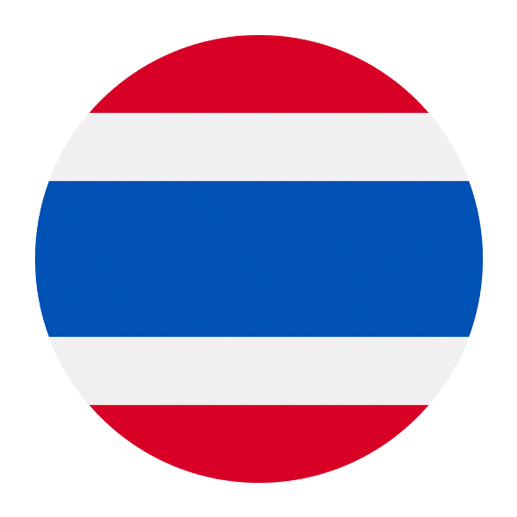Learning a new language can be an exhilarating journey, one that opens doors to new cultures, friendships, and opportunities. Thai, with its melodic tones and intricate script, offers a particularly fascinating challenge. For English speakers, navigating the tonal complexities and unique grammatical structures of Thai can be daunting. Fortunately, modern technology has provided us with a wealth of language learning software designed to make this process more accessible and enjoyable. In this article, we will review some of the best Thai language learning software available, examining their features, strengths, and potential drawbacks to help you find the best fit for your language learning needs.
Rosetta Stone
Rosetta Stone has long been a staple in the language learning community, and for good reason. Known for its immersive approach, Rosetta Stone teaches languages using context and visual cues rather than direct translation.
Features
Rosetta Stone uses a method called Dynamic Immersion, which aims to teach you Thai in a way similar to how you learned your first language. The software uses images, sounds, and text to build your vocabulary and grammar skills. It offers speech recognition technology to help with pronunciation, and the lessons are designed to be interactive and engaging.
Strengths
1. **Immersive Learning**: The lack of translation encourages you to think in Thai, which can accelerate fluency.
2. **Speech Recognition**: The TruAccent technology helps you perfect your pronunciation, which is crucial for mastering Thai tones.
3. **Flexibility**: Available on multiple platforms, including desktop and mobile, allowing you to learn on the go.
Drawbacks
1. **Price**: Rosetta Stone is one of the more expensive options on the market.
2. **Repetitiveness**: Some users find the lessons repetitive and lacking in variety.
3. **Lack of Cultural Context**: The program doesn’t delve deeply into cultural nuances, which are essential for truly understanding and using the language.
Pimsleur
Pimsleur is renowned for its audio-based learning approach, which focuses heavily on listening and speaking skills. This can be particularly beneficial for a tonal language like Thai.
Features
Pimsleur offers a series of 30-minute audio lessons that you can follow along with. The lessons are designed to be taken daily, and they build on each other progressively. The focus is on conversation skills, with an emphasis on pronunciation and comprehension.
Strengths
1. **Audio Focus**: Excellent for developing listening and speaking skills, crucial for mastering Thai tones.
2. **Convenience**: The audio format allows you to learn while commuting, exercising, or doing other activities.
3. **Proven Method**: The Pimsleur method has been used successfully by millions of language learners.
Drawbacks
1. **Limited Reading and Writing**: Pimsleur doesn’t offer much in terms of learning Thai script.
2. **Repetitive Format**: Some users may find the audio lessons monotonous over time.
3. **Cost**: While not as expensive as Rosetta Stone, Pimsleur is still a significant investment.
Duolingo
Duolingo has gained immense popularity due to its gamified approach to language learning. It offers a free, user-friendly platform that makes learning fun and engaging.
Features
Duolingo uses a variety of interactive exercises to teach vocabulary, grammar, and pronunciation. The app tracks your progress and offers rewards and incentives to keep you motivated. It also includes a social component, allowing you to compete with friends and other learners.
Strengths
1. **Cost**: Duolingo is free, with optional in-app purchases for additional features.
2. **Engagement**: The gamified approach makes learning enjoyable and keeps you coming back.
3. **Comprehensive**: Covers reading, writing, listening, and speaking skills.
Drawbacks
1. **Limited Depth**: While good for beginners, Duolingo may not offer the depth needed for advanced learners.
2. **Inconsistent Quality**: Some users find the Thai course less polished compared to other languages on the platform.
3. **Ads**: The free version includes ads, which can be distracting.
Ling
Ling is a newer app that has been gaining traction for its comprehensive approach to learning Thai. It combines a variety of learning methods to cater to different learning styles.
Features
Ling offers interactive lessons that include speaking, listening, reading, and writing exercises. It also incorporates games, quizzes, and cultural tips to make learning more engaging. The app uses a chatbot to help you practice conversation skills in real-time.
Strengths
1. **All-in-One Approach**: Covers all aspects of language learning, including Thai script.
2. **Engaging Content**: The variety of exercises and games keeps learning interesting.
3. **Cultural Insights**: Provides cultural context, which is essential for using the language effectively.
Drawbacks
1. **Subscription Model**: While affordable, it requires a monthly subscription.
2. **Newer App**: As a newer app, it may have some bugs and less user feedback compared to established programs.
3. **Overwhelming for Beginners**: The comprehensive approach might be too much for absolute beginners.
italki
italki offers a different approach by connecting learners with native Thai speakers for one-on-one lessons. This platform focuses on personalized learning and real-world conversation practice.
Features
italki allows you to choose from a wide range of professional teachers and community tutors. You can schedule lessons at your convenience and tailor them to your specific learning goals. The platform also offers a community forum where you can practice with other learners.
Strengths
1. **Personalized Learning**: Lessons are tailored to your needs and pace.
2. **Native Speakers**: Learning from native speakers helps with pronunciation and cultural understanding.
3. **Flexibility**: You can schedule lessons at times that suit you and choose teachers that match your learning style.
Drawbacks
1. **Cost**: The cost of lessons can add up, especially with professional teachers.
2. **Inconsistent Quality**: The quality of lessons can vary depending on the teacher.
3. **Requires Self-Motivation**: Without the structure of a course, you need to be self-disciplined to maintain regular lessons.
ThaiPod101
ThaiPod101 is part of the Innovative Language family and offers a comprehensive suite of learning tools, including audio and video lessons, flashcards, and interactive quizzes.
Features
ThaiPod101 provides lessons for all proficiency levels, from absolute beginner to advanced. The lessons are designed to be culturally relevant and are taught by native speakers. The platform also offers a variety of study tools, including a customizable flashcard system and a vocabulary database.
Strengths
1. **Comprehensive Content**: Offers a wide range of lessons and study tools.
2. **Cultural Relevance**: Lessons include cultural insights, which are essential for effective communication.
3. **Flexible Learning**: You can choose lessons that match your proficiency level and interests.
Drawbacks
1. **Subscription Model**: Requires a monthly or annual subscription for full access.
2. **Overwhelming for Beginners**: The sheer amount of content can be overwhelming for new learners.
3. **Variable Lesson Quality**: Some lessons may be more engaging or useful than others.
Mango Languages
Mango Languages is known for its user-friendly interface and practical approach to language learning. It focuses on teaching conversational skills through real-world scenarios.
Features
Mango Languages offers lessons that are designed to teach you how to communicate effectively in everyday situations. The lessons include interactive exercises, cultural notes, and voice comparison technology to help with pronunciation.
Strengths
1. **Practical Focus**: Lessons are centered around real-world conversations.
2. **User-Friendly**: The interface is intuitive and easy to navigate.
3. **Cultural Notes**: Provides cultural context, which is crucial for effective communication.
Drawbacks
1. **Limited Depth**: May not offer the depth needed for advanced learners.
2. **Cost**: Requires a subscription, though it is more affordable than some other options.
3. **Limited Customization**: Lessons are pre-structured, with less flexibility for personalized learning.
Conclusion
Choosing the right Thai language learning software depends on your learning style, goals, and budget. Each of the programs reviewed here has its own unique strengths and potential drawbacks. Rosetta Stone and Pimsleur are great for those who prefer a structured approach, while Duolingo and Ling offer more interactive and gamified learning experiences. italki provides personalized lessons with native speakers, and ThaiPod101 offers a wealth of content and cultural insights. Mango Languages stands out for its practical focus and user-friendly interface.
Ultimately, the best program for you is the one that keeps you motivated and engaged. Consistency is key in language learning, so choose a program that you enjoy and can stick with. Happy learning!

